First time in
Antarctica

With visitor numbers rising on the White Continent, many people are now experiencing it for the first time. We sent our own Antarctic novice to see what they can expect
Words & photographs George Kipouros
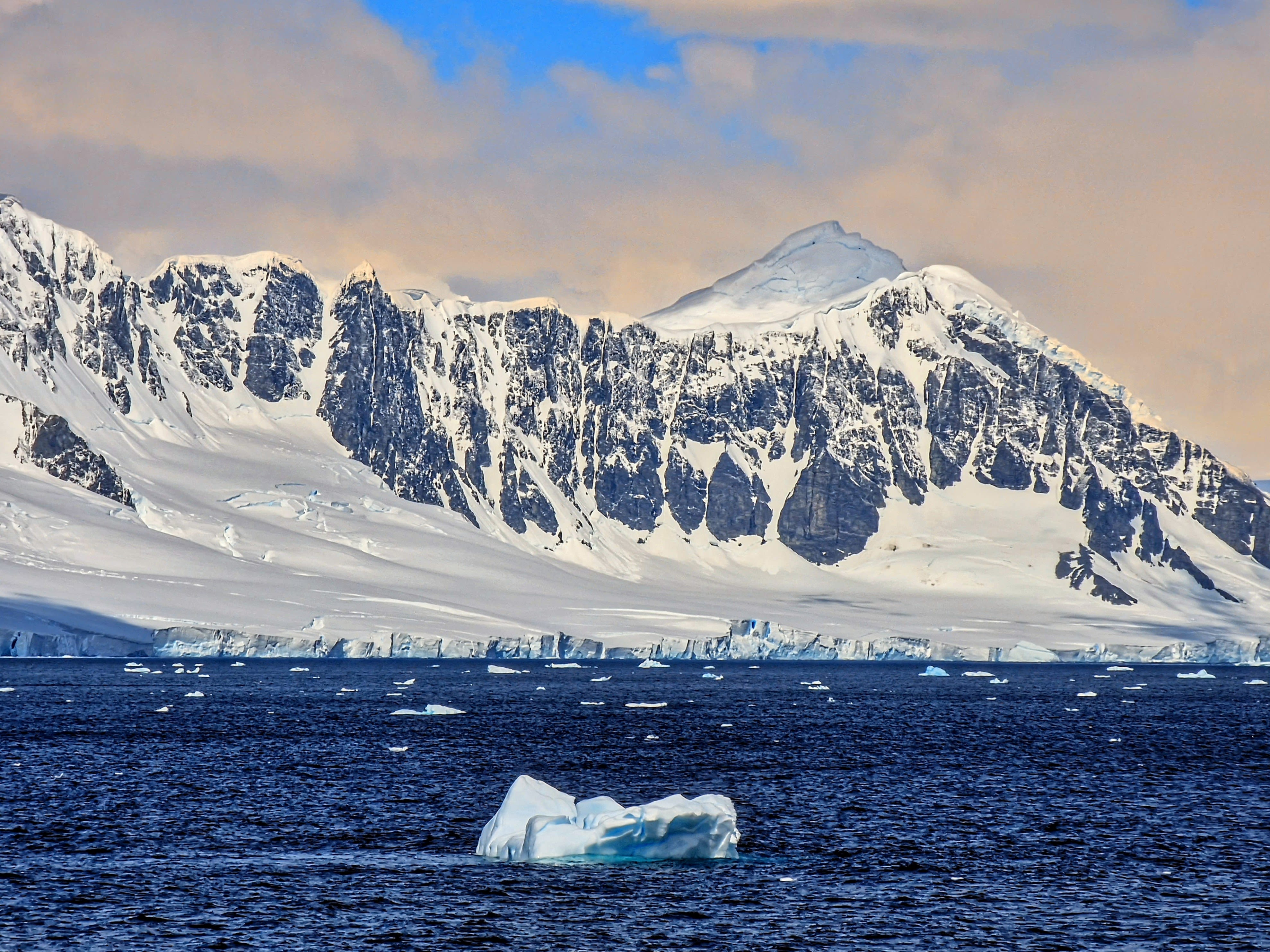
The mountainous landscape of the Antarctic Peninsula is something to behold
The mountainous landscape of the Antarctic Peninsula is something to behold
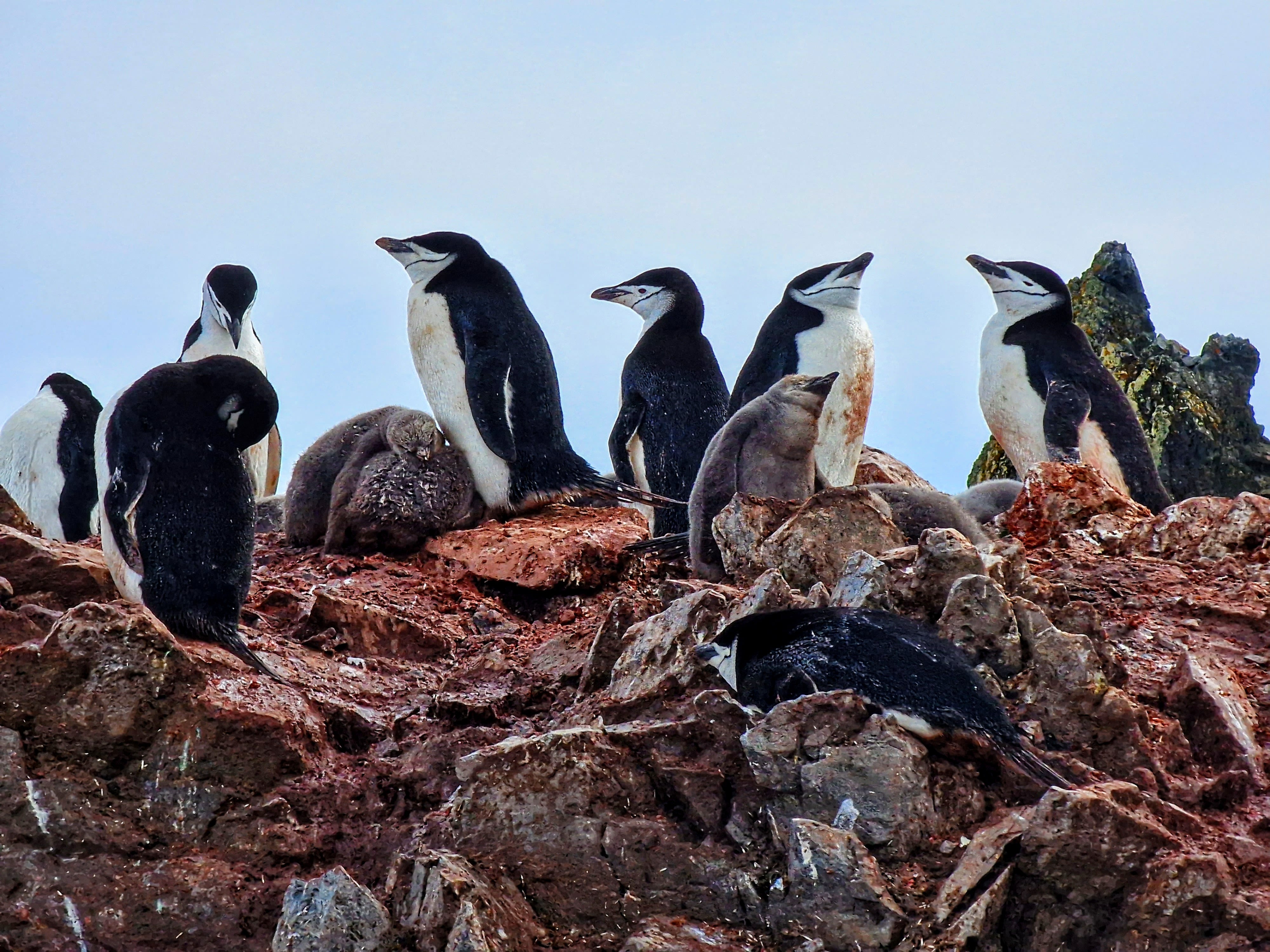
Many penguin species raise their chicks from December to January
Many penguin species raise their chicks from December to January
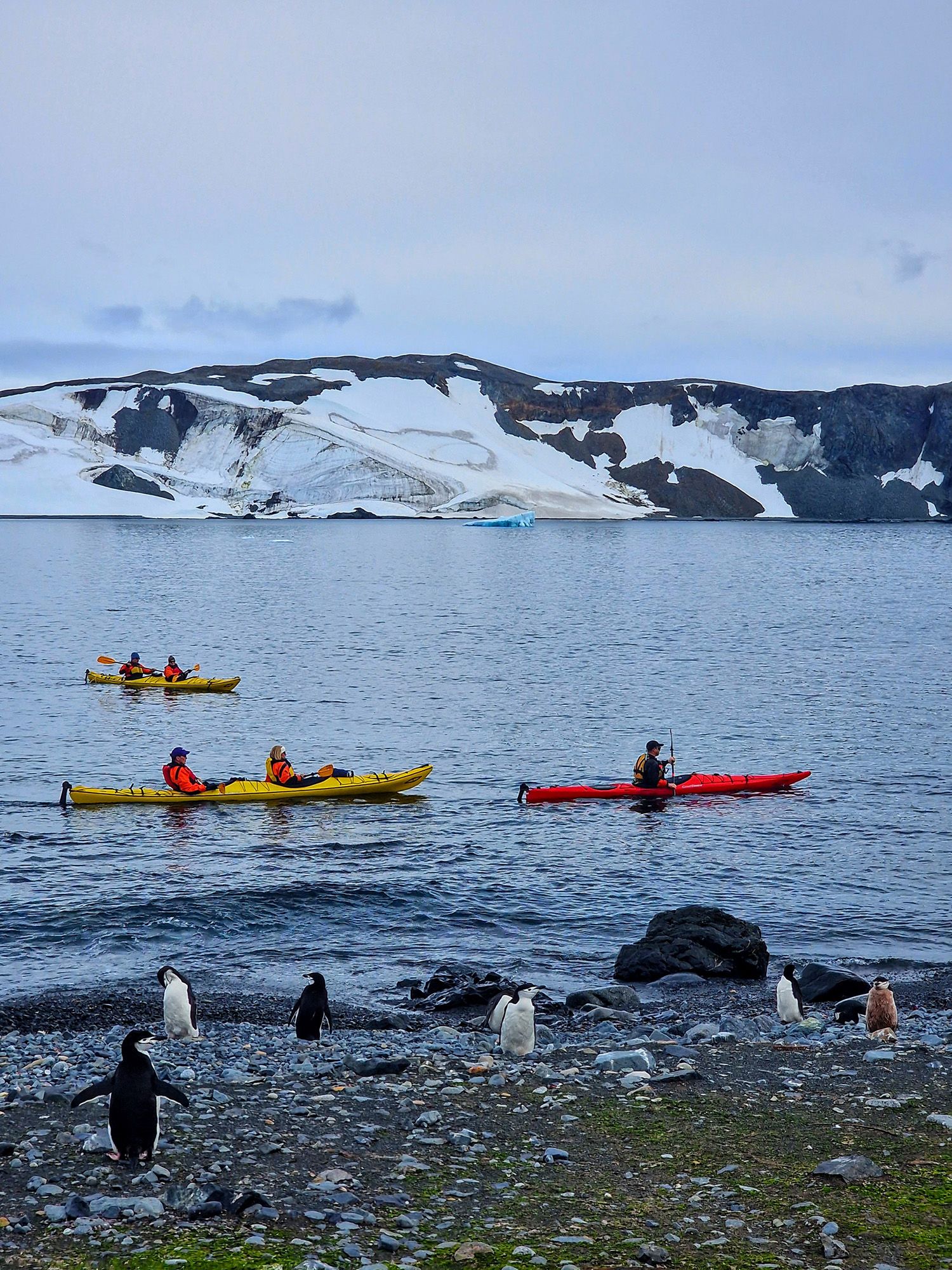
Land, at last. A dense fog afforded only glimpses of an ethereal landscape of snow, ice and rock. An unmistakable sense of achievement flooded over me; one of those moments in travel when you feel more alive than ever. After all, this was the White Continent that lay ahead of us, the most remote and inaccessible landmass on the planet.
For most travellers attempting to reach West Antarctica, the quickest way is by sailing a narrow stretch of sea where the Atlantic entangles with the Pacific and the Southern Ocean. It is rarely smooth going, and only possible in the warmer months. But after two challenging days crossing the infamous Drake Passage, whose strong winds and rough seas are the stuff of legend, we were approaching Elephant Island, some 250km off the tip of the Antarctic Peninsula.
The continent’s inaccessibility, coupled with weather conditions so harsh that life really shouldn’t exist here, has always been part of its mystique. Against all odds, a unique endemic ecosystem has thrived for millennia. It’s no wonder that Antarctica has overtaken human imagination ever since Aristotle first theorised its existence in the 4th century BC. He saw that the north lay under the constellation Arktos (the Great Bear/Ursa Major), and surmised the existence of a mirror image of the world he knew, a giant southern landmass he called Antarktos (opposite of the north).
It was a long time between then and when Captain James Cook became the first recorded navigator to cross the Antarctic Circle in January 1773; and longer still before Roald Amundsen became the first to reach the South Pole in December 1911. Their stories, as well as many other heroic tales of human perseverance, endurance and disaster, have only furthered the myths that swirl the White Continent as freely as the wind.
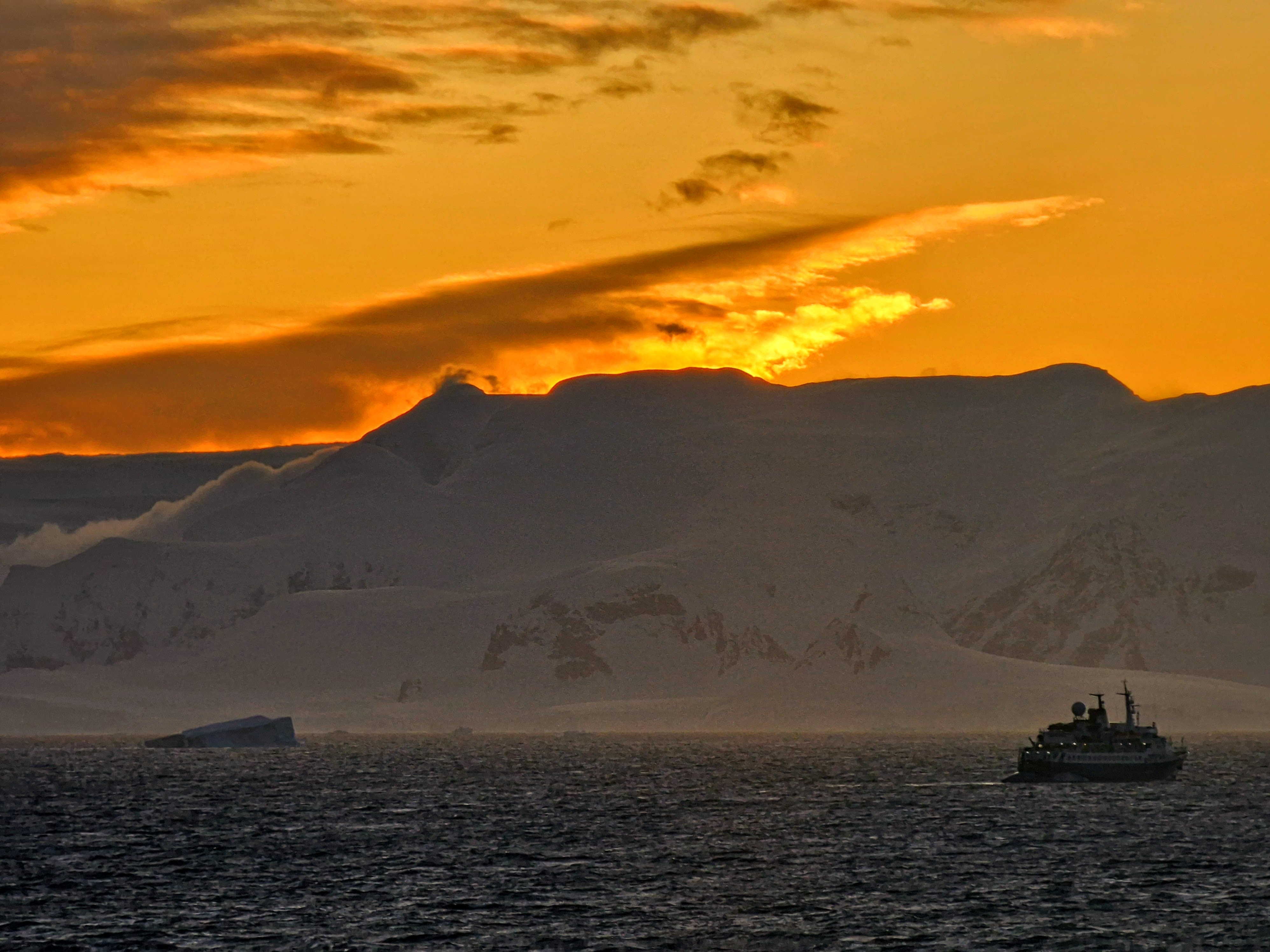
Petermann Island, named after a German geographer in the late 1800s, is home to one of the southernmost colonies of gentoo penguins in the world
Petermann Island, named after a German geographer in the late 1800s, is home to one of the southernmost colonies of gentoo penguins in the world
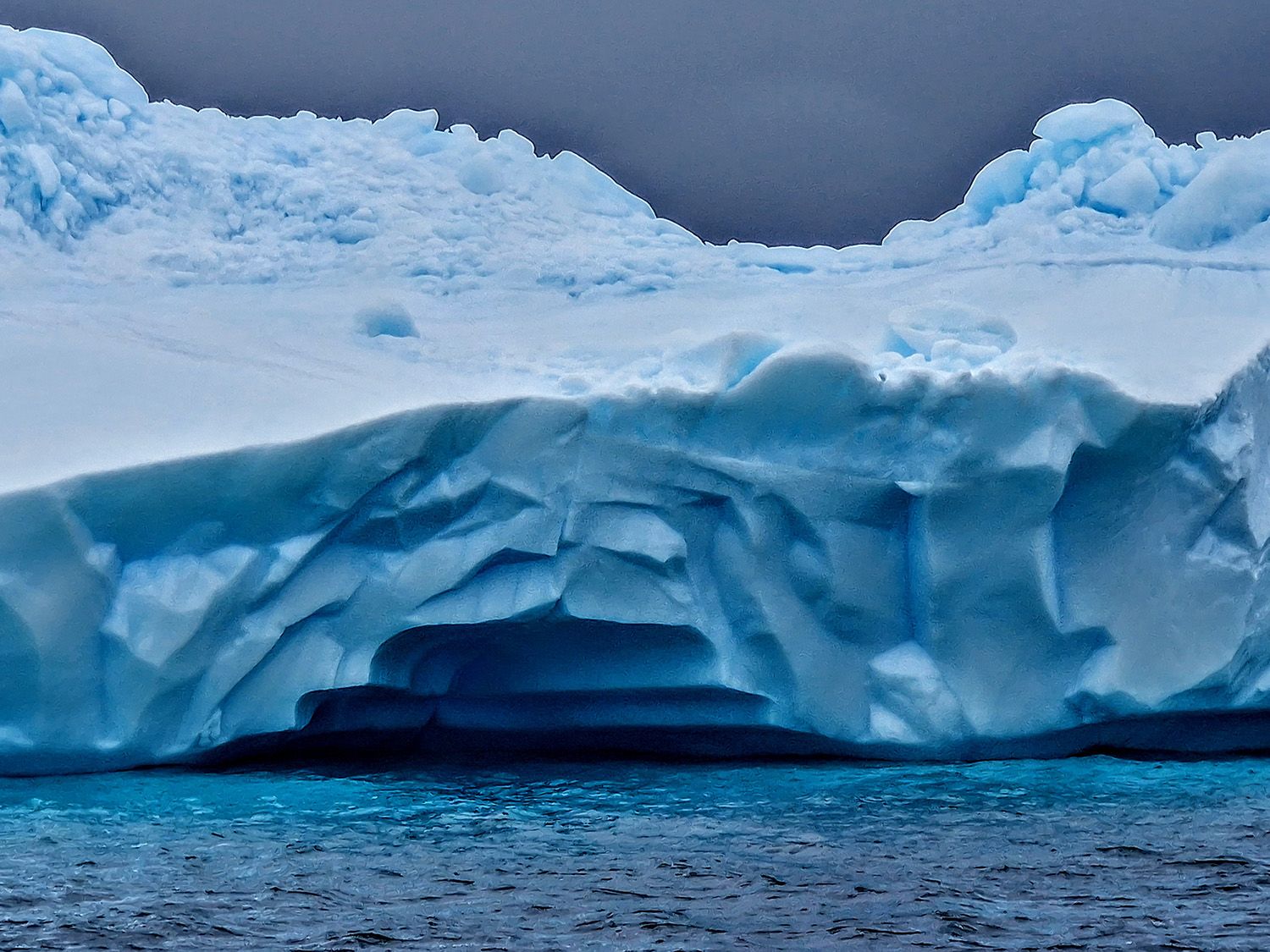
Just off the Antarctic Peninsula lies Iceberg Alley, a graveyard of ice where huge ’bergs escaping Antarctica begin to melt and take on very different forms, some even pocked with naturally formed geometric caves
Just off the Antarctic Peninsula lies Iceberg Alley, a graveyard of ice where huge ’bergs escaping Antarctica begin to melt and take on very different forms, some even pocked with naturally formed geometric caves
This is more than just a bucket-list destination; even setting foot here is to join some of humanity’s greatest explorers in reaching one of the most inhospitable corners of our planet. So it was only fitting that we had arrived at Elephant Island on the day of the 101st anniversary of the death of Ernest Shackleton, one of the greatest explorers to chart the continent. It was here that he had left his crewmates to go in search of rescue after their ship, Endurance, had been crushed by the polar ice.
Shackleton’s crew had used the island as their own personal larder, eating penguins and seals to survive. We had far more benign intentions, so had gathered in the amphitheatre of our ship, Silver Cloud, for a mandatory briefing on what we could and couldn’t do during our time here, based on guidelines set out by the International Association of Antarctica Tour Operators (IAATO).
“This is a fragile ecosystem under extreme threat from climate change and human activities, so we have to tread very carefully,” began Schalk Botha, our South Africa-born expedition leader, before outlining the numerous rules and regulations aimed at protecting the fauna and landscape.
Prophetically, Schalk also went to great lengths to explain how unpredictable our time on the continent would be: “The weather changes every second, and that means our plans may too. You need to be prepared for changes, even when we are on the ground or in the middle of an activity.”
He also finished the opening session with a warning: “Antarctica is the highest, driest, windiest and coldest continent in the world, so dress and behave accordingly!”
I was buzzing with excitement. I was finally about to begin exploring this continent of superlatives.
The unpredictable chronicles
Soon after the briefing ended, we got our first taste of what would become a frequent pattern over the next 12 days.
“Our Zodiac tour of Elephant Island has to be cancelled due to high winds causing waves over 3m high, which are expected to worsen,” boomed Schalk over the internal PA.
Antarctica’s unpredictable weather is why we didn’t have a set itinerary before boarding. Instead, in an approach reminiscent of the days of the early explorers, a printed journal (The Daily Chronicles) was delivered, featuring an outline of the following day’s ‘intended’ activities and plans.
The next morning, however, we arrived at Brown Bluff on the Tabarin Peninsula to even worse conditions. Schalk went on the intercom again to announce the cancellation of the landing – the first planned mainland excursion. Every part of my body was itching to get ashore; Antarctica’s frozen wonders were waiting just outside my veranda.
"Antarctica is the highest, driest, windiest and coldest continent in the world"
This was my first time ever on a cruise ship, not least an expedition ship, and I had chosen the Silver Cloud, the original vessel of luxury operator Silversea. In truth, I had been wary of becoming restless with all the time spent at sea, but to my surprise, there wasn’t a moment that I was bored, and my simple anti-nausea ginger pills worked wonders. Not only was the satellite-powered free wifi reliable, but the food in the four restaurants was exquisite, as was the gym and complimentary spa facilities. Yet it wasn’t any of these elements that made the all-suite Silver Cloud truly luxurious. That honour derived from the 35 scientists, historians and naturalists who joined us on the expedition.
During our sail across the Drake Passage, and upon every cancelled activity, we received insightful lectures introducing us to all aspects of the continent, ranging from early explorer history and underwater geology to marine biology and the impact of climate change. But I had not come all the way down to the Scotia Sea just to attend a series of talks, and the real prize remained stepping ashore in the company of our experienced lecturers.
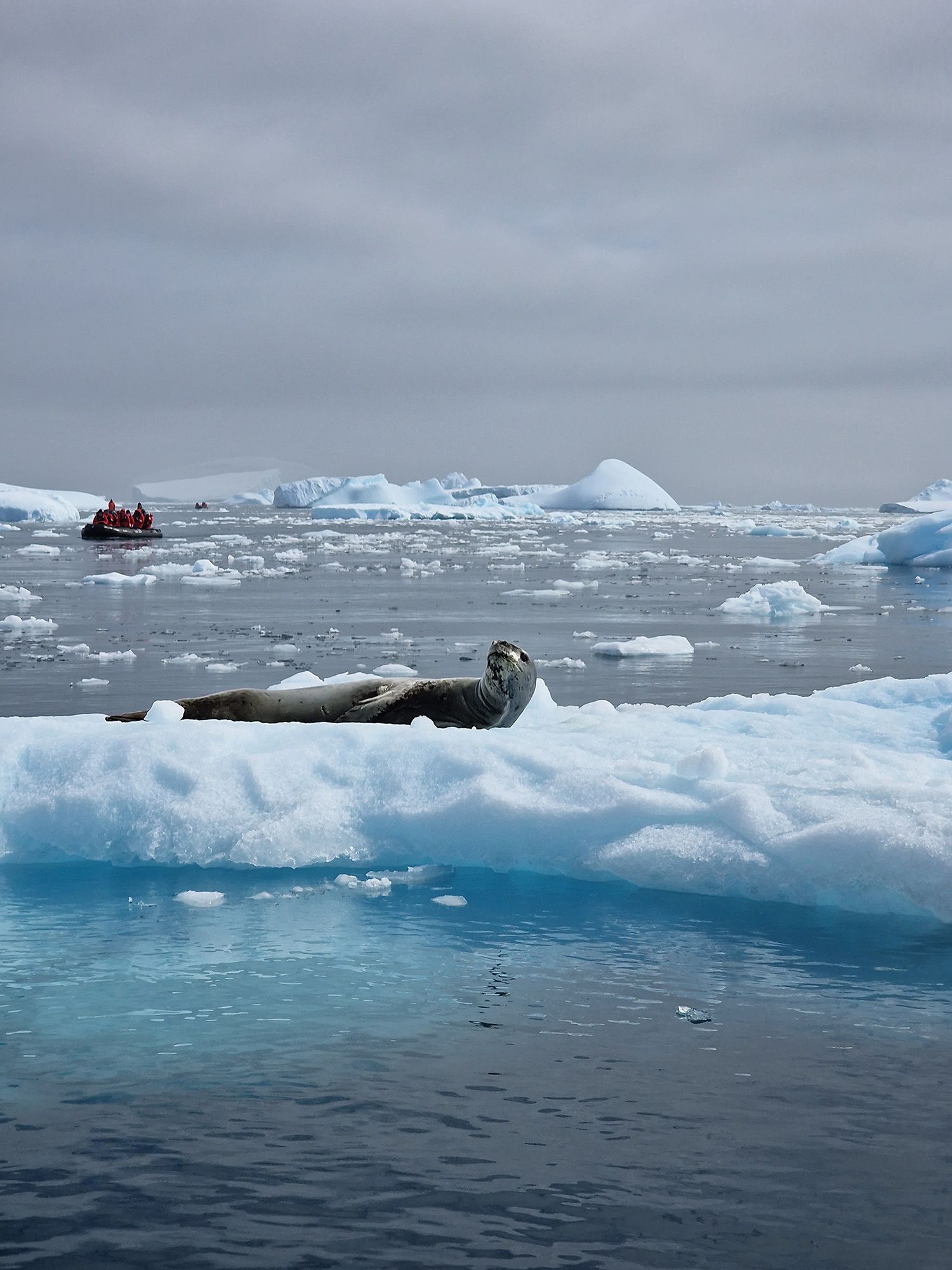
A leopard seal – one of the most prolific predators of penguins in Antarctic waters – belies its fierce reputation by taking it easy on a pack of floating ice in Hope Bay
A leopard seal – one of the most prolific predators of penguins in Antarctic waters – belies its fierce reputation by taking it easy on a pack of floating ice in Hope Bay
In the afternoon of our fourth day spent onboard, Antarctica’s weather started to behave and we finally got our first taste of the continent’s true magnificence in Hope Bay. As my 12-strong Zodiac group departed the Silver Cloud, the actual clouds and haze suddenly cleared to reveal a panorama of peaks, glaciers and icebergs. This was a landscape unlike anything I’d seen before, and even more wondrous than my visits to the Arctic region.
Complementing the fantastical landscape was an unexpected highlight: a leopard seal enjoying the sunshine on top of a small iceberg. Just as we gently approached, it yawned, allowing us a fearful glimpse of its massive jaws. This elusive animal is among the most dangerous predators to be found in these waters, second only to the mighty orca.
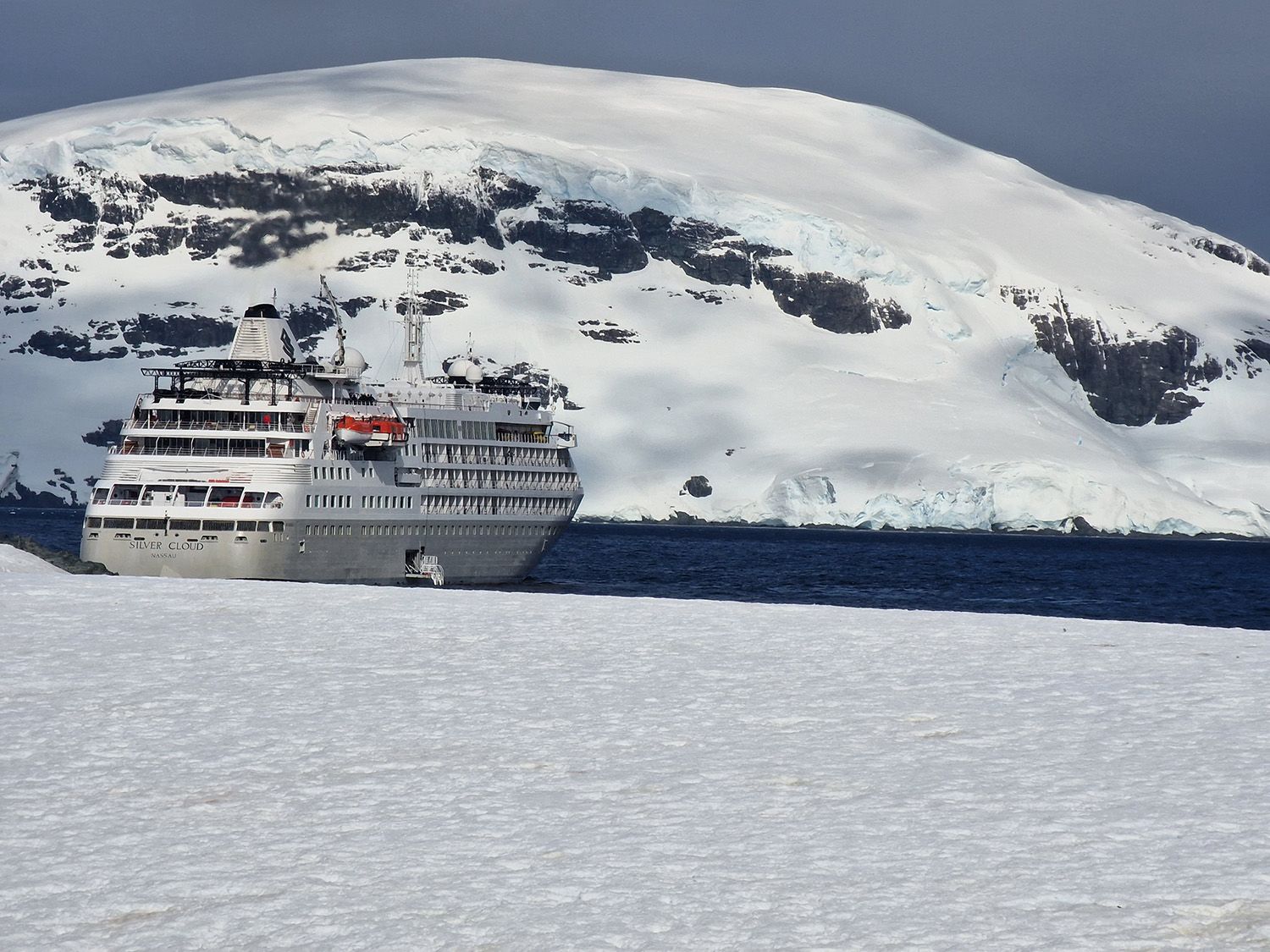
This Zodiac tour was just the prelude though, as the following day we at last achieved our first landing, on an island in Curtiss Bay. It started with a bang and my first chance to come face to face with Antarctica’s most famous residents: penguins, specifically the gentoo species.
A lecture the night before by naturalist Damon Ramsey had introduced us to the different species of penguin, including the three we were expecting to see: gentoo, adélie and chinstrap. I also discovered that the most photogenic species, the emperor penguin, was rarely found on the Antarctic Peninsula, the most accessible tip of the continent.
While I couldn’t wait for my first penguin encounter, leaving the ship was a time-consuming process. Preparing for the continent’s harsh weather meant putting on multiple layers of clothing and gear, starting with insulated thermal underwear and continuing all the way up to the mandatory lifejacket and heavy-duty boots. Getting ready took me almost 20 minutes on my first endeavour, improving to a personal best of six minutes on my final outing. Before and after, great care was taken to sterilise our boots, so we would not transfer any of our pathogens onto Antarctica – or bring any of the penguin poo back onboard.
"We heard stories of endurance and survival, and not just tales of the early adventurers"
Our very first landing was also the most challenging of the trip. The crew formed a human chain to help guests from the Zodiacs across the rocky and slippery coastline.
“It’s worth it. Keep going; you’re safe and we’re holding on to you,” encouraged Nil Rodes, the ship’s marine geoscientist, as he cheered on a younger guest who was a little uncertain of whether she could make it ashore.
“If we are not 100% sure of everyone’s safety, Schalk will always cancel the landing,” affirmed Nil. He told me that it also comes down to every individual’s comfort levels. Before each landing, we were given a thorough description of what we would encounter and the level of difficulty; it was up to each passenger to decide whether they would join or not. By this point, I would happily have skipped barefoot across the ice to set foot on land or glimpse its wildlife.
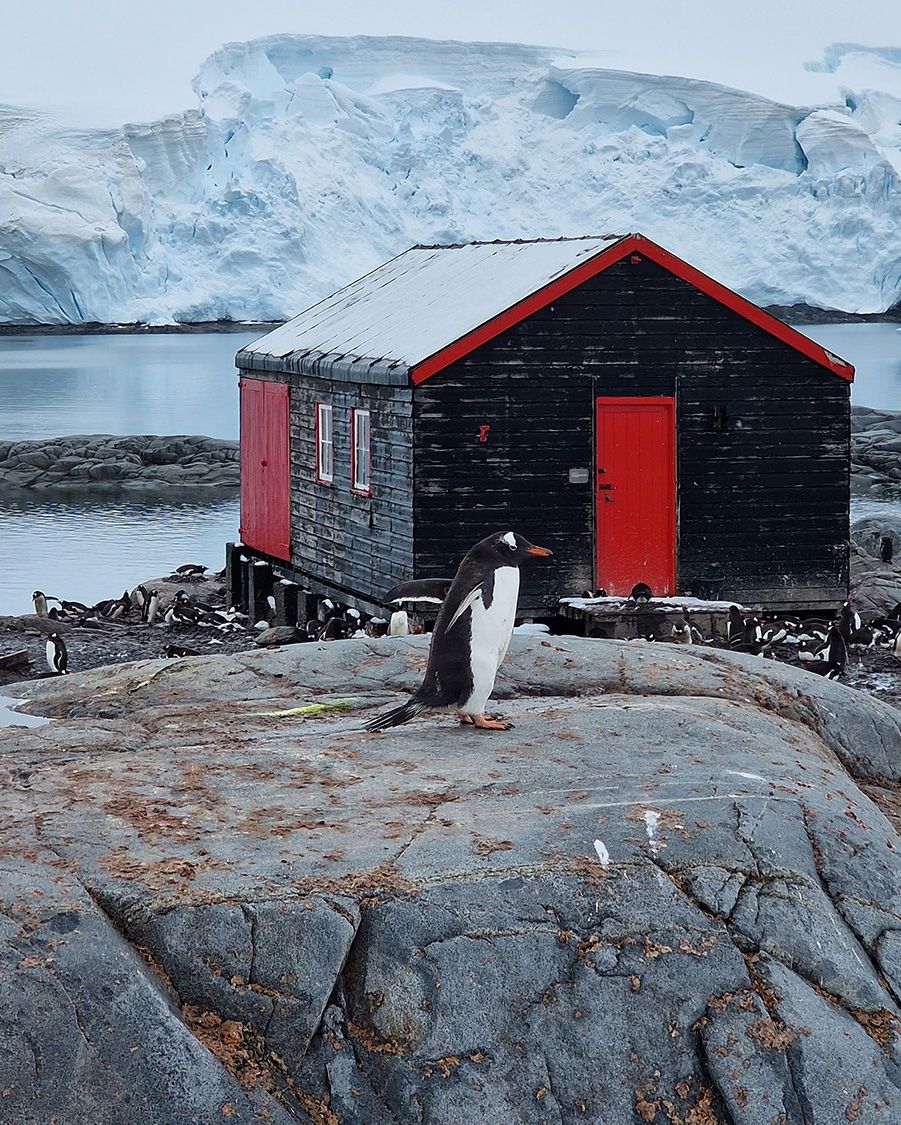
Amiable gentoo penguins roam freely around the base at Port Lockroy and show little fear of the various humans who turn up there
Amiable gentoo penguins roam freely around the base at Port Lockroy and show little fear of the various humans who turn up there

A gang of curious gentoos swim alongside a boat as it pulls into Curtiss Bay (Alamy Stock Photo)
A gang of curious gentoos swim alongside a boat as it pulls into Curtiss Bay (Alamy Stock Photo)
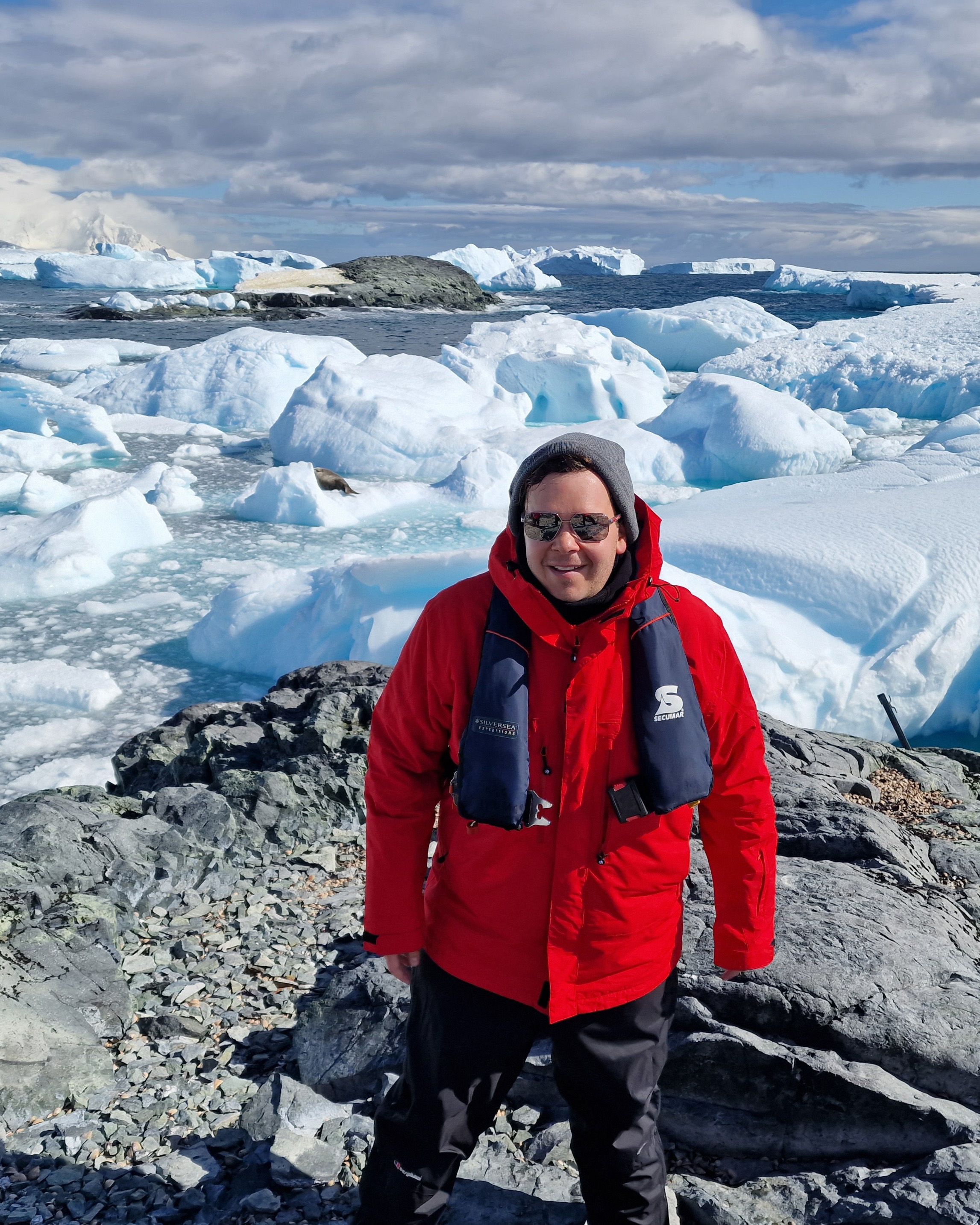
The author said it takes a while to get kitted up before disembarking
The author said it takes a while to get kitted up before disembarking
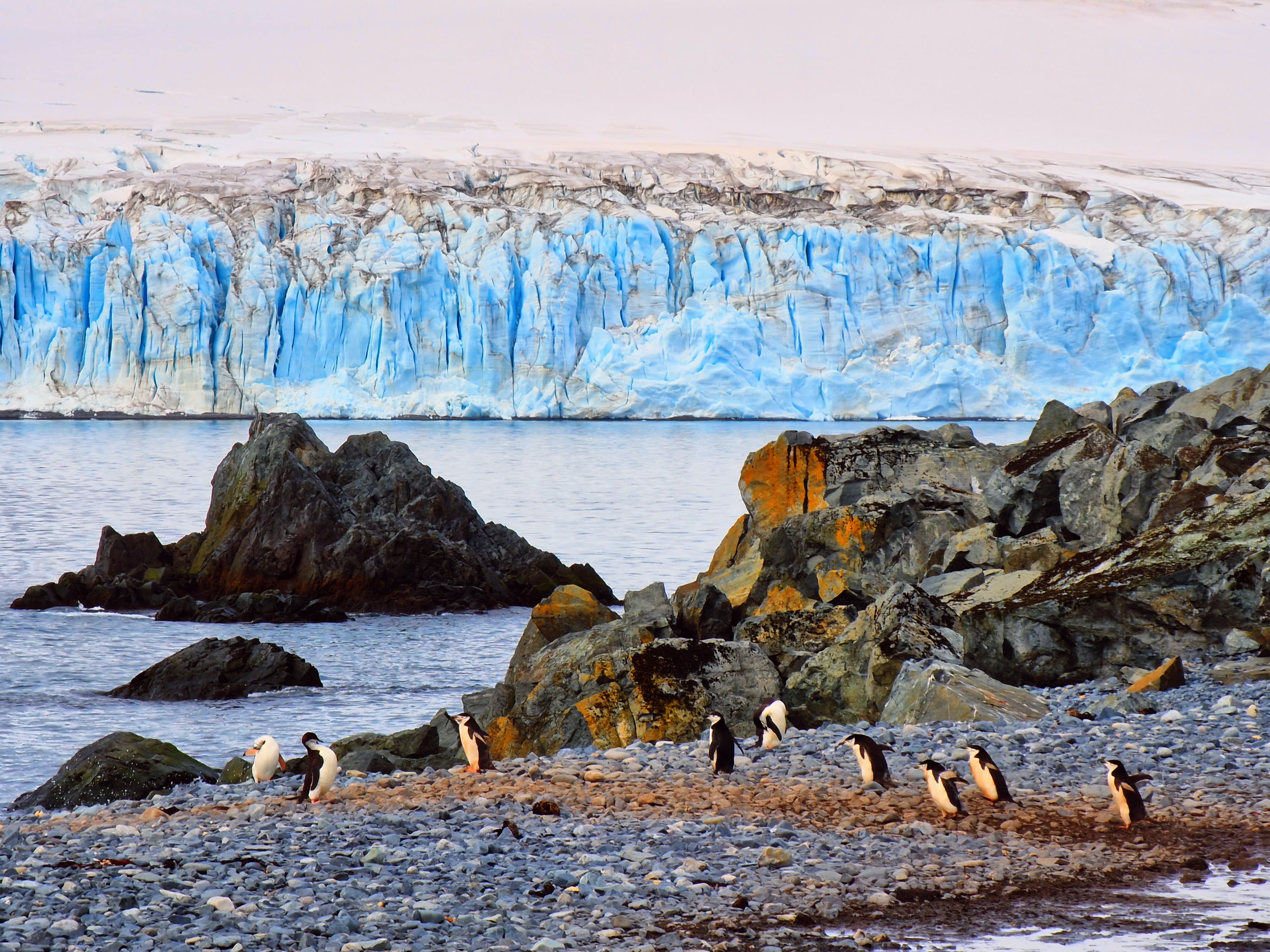
Penguins stick to their self-made penguin highways
Penguins stick to their self-made penguin highways
The penguin affair
“Your first encounter with penguins is something you’ll remember for the rest of your life,” smiled Nil as we walked towards the rookery and its hundreds of birds.
Penguins are at their best in the water, and often appear rather imbalanced, if not downright clumsy, on land. It seemed as if they were really struggling to be there.
“That is why they stick to their self-made penguin highways,” explained Nil, showing the paths that they formed by following each other’s trails.
One can watch penguins for hours and never see a single moment of stillness. They also do not perceive humans as a threat; they just keep going about their own business no matter what. We witnessed how they built their pebble nests, and saw their attempts at stealing pebbles from each other.
“They are simply recycling,” smiled Nil. I was unconvinced their cheeky behaviour was truly benevolent.
Added to the list of things I wasn’t expecting from my first penguin encounter was the horrible smell. It was especially potent when approaching a rookery, and unlike anything I’d come across before. “Eau d’Antarctica” is how a fellow traveller described it. The mix of vomit (how they feed their chicks) and penguin poop made for a scent that belied the overall cuteness of everything else that they did.
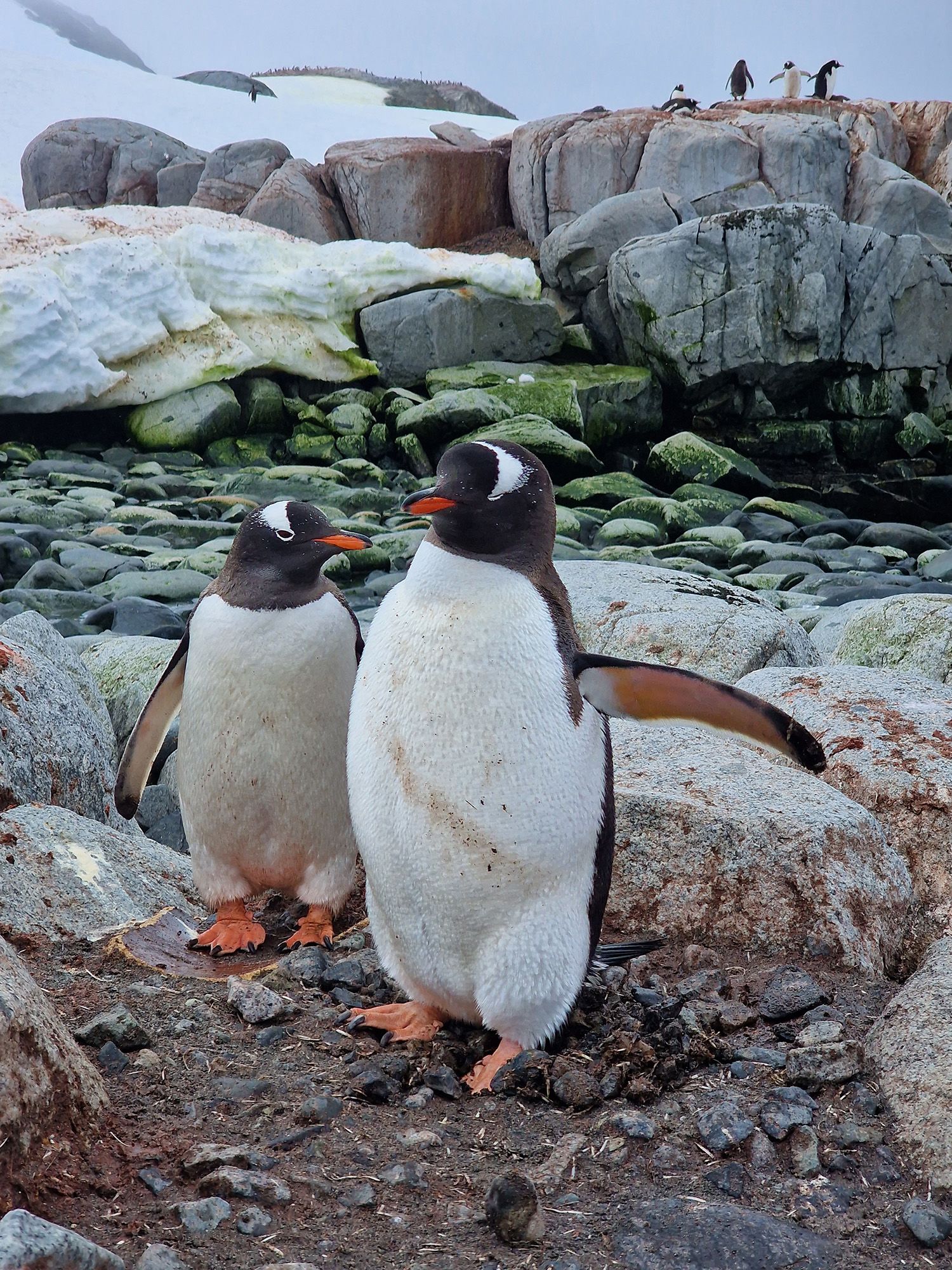
The gentoos of Petermann Island are far from camera shy
The gentoos of Petermann Island are far from camera shy
On Petermann Island the following day, we saw adélie and gentoo penguins. It was also our first sighting of elephant seals, whose lethargic nature was at odds with the bustling and noisy penguin rookery they rested beside.
I spent some time observing these seals do nothing but occasionally yawn, unfussed by our presence. That wouldn’t have always been the case, as we were to find out at that evening’s lecture by Damon. At the peak of the seal-hunting era, elephant seals were prized for their oil, and their numbers were reduced to the brink of extinction in many locations across Antarctica during the late 19th century.
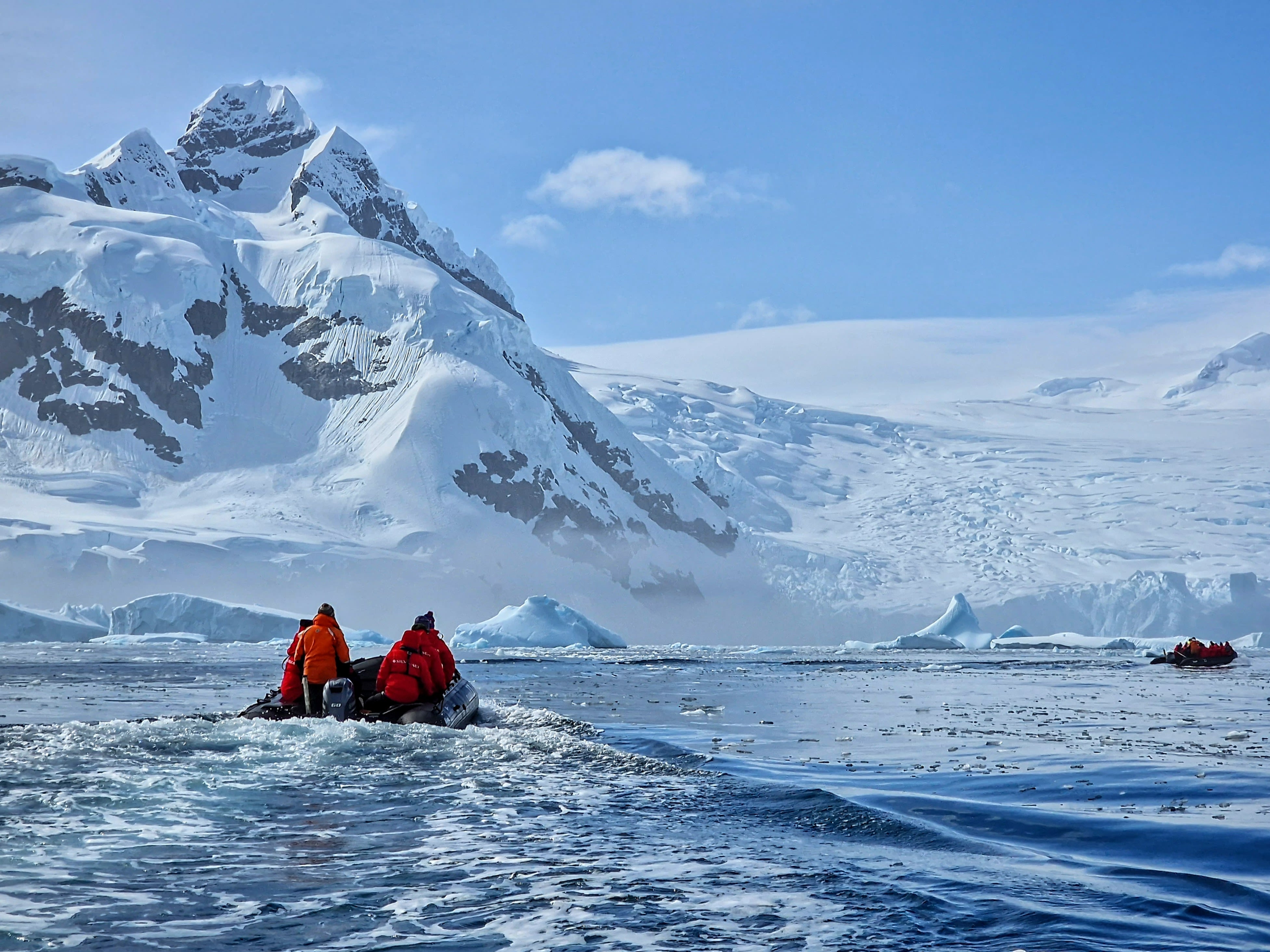
A Zodiac powers through the waters of the Antarctic Peninsula
A Zodiac powers through the waters of the Antarctic Peninsula
After little more than an hour, our visit came to a swift end. Landings for each Zodiac group were rarely more than an hour and a half long in total. There is an airport-style slot-booking system that every vessel must adhere to, with very little flexibility for last-minute changes. Due to the boom in Antarctic tourism over the previous decade, slots for popular landing spots are booked months in advance.
Another reason for our quick departure was because we were on a mission. The ship was hurrying to make its way further south so that we could cross the 66th parallel, otherwise known as the Antarctic Circle. Not many vessels travel so far down the peninsula. I was grateful we did, since our single stop beyond the Circle proved to be my highlight of the trip.
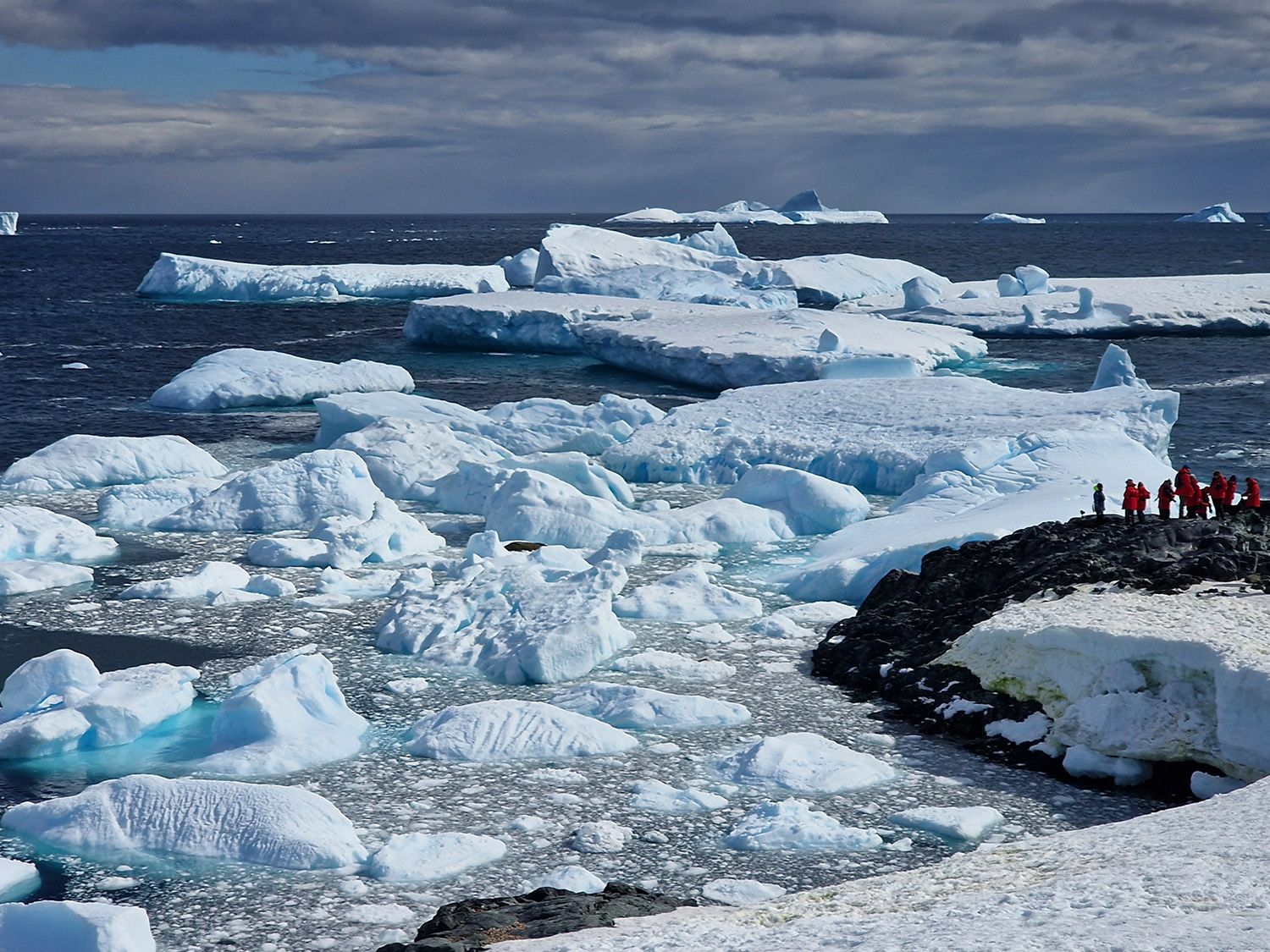
A Weddell seal rests on the ice around Detaille Island, which is so far south that it lies beyond the Antarctic Circle
A Weddell seal rests on the ice around Detaille Island, which is so far south that it lies beyond the Antarctic Circle
Human perseverance
Detaille Island (at 66°52’ S) was the Antarctica of my imagination, and the White Continent in microcosm. After an easy landing and a short walk up a snow-covered hill, the vista beyond opened to a majestic scene of more than 20 Weddell seals resting on icebergs of every size and colour. We encountered hundreds of gentoo and chinstrap penguins (there were at least five rookeries in the area), and over our heads flew myriad endemic birds.
Added to the atmospheric setting was an abandoned scientific hut, framing the glorious natural landscape. My senses were drawn in every direction, and yet all I wanted to do was sit still and take in the otherworldly landscape.
On our return to the ship, a celebratory activity had been planned. About 60 of the Silver Cloud’s 196 guests were getting ready for a much-anticipated polar plunge from the landing deck. At a balmy 1.5ºC, the water in Antarctica was too cold for my Mediterranean skin. Instead, I wished my fellow passengers luck as I took in their shrieks wrapped up in my thermal jacket. This ‘once-in-a-lifetime’ experience ended Silversea-style with either a choice selection of premium Champagnes or the ship’s signature hot ginger tea medley, offered according to the level of each guest’s shivers.
Antarctica was delivering on its promise of big adventures, otherworldly nature and spectacular wildlife. Yet I was curious to learn more about how humans fitted into this harsh environment. Prior to my trip, I was aware that, due to Covid-19 restrictions, it would not be possible to visit any working scientific stations. But, as luck would have it, two special ‘hitchhikers’ had made it onboard the Silver Cloud, joining us from the UK Antarctic Heritage Trust.
We met Sven Habermann and Martin Herrmann in the lecture theatre, where they introduced us to the work of the Trust, which looks after six historic sites built on the peninsula between the 1940s and ’70s. We heard not just tales of the early adventurers, but stories of endurance and survival that went all the way up to the mid-20th-century expeditions – part of humanity’s quest to explore and understand this mysterious continent.
We dropped Sven and Martin off at Damoy Point so they could repair and maintain the historic Damoy Hut over a period of two months. This meant that we also got the unique opportunity to visit this usually off-the-itinerary site.
Welcoming us inside the hut was Mila Lassuy, our onboard history and archaeology lecturer, who explained the many challenges of surviving an Antarctic winter and how each building was created to withstand the extreme conditions. Damoy Hut, much like the one we had visited on Detaille Island, felt like a real-life time capsule from the 1950s, ’60s and ’70s, complete with unopened cans and provisions for surviving the long Antarctic winter.
Continuing our search for human presence in Antarctica, we set sail for Port Lockroy, a wondrous natural harbour off Wiencke Island. An Antarctic base of the same name lies in the bay on Goudier Island, best known for hosting the most southerly working post office in the world. Managed by the UK Antarctic Heritage Trust, it received over 16,000 visitors last season, many eager to mail a letter from Antarctica. My London-bound postcards took just a month to arrive.
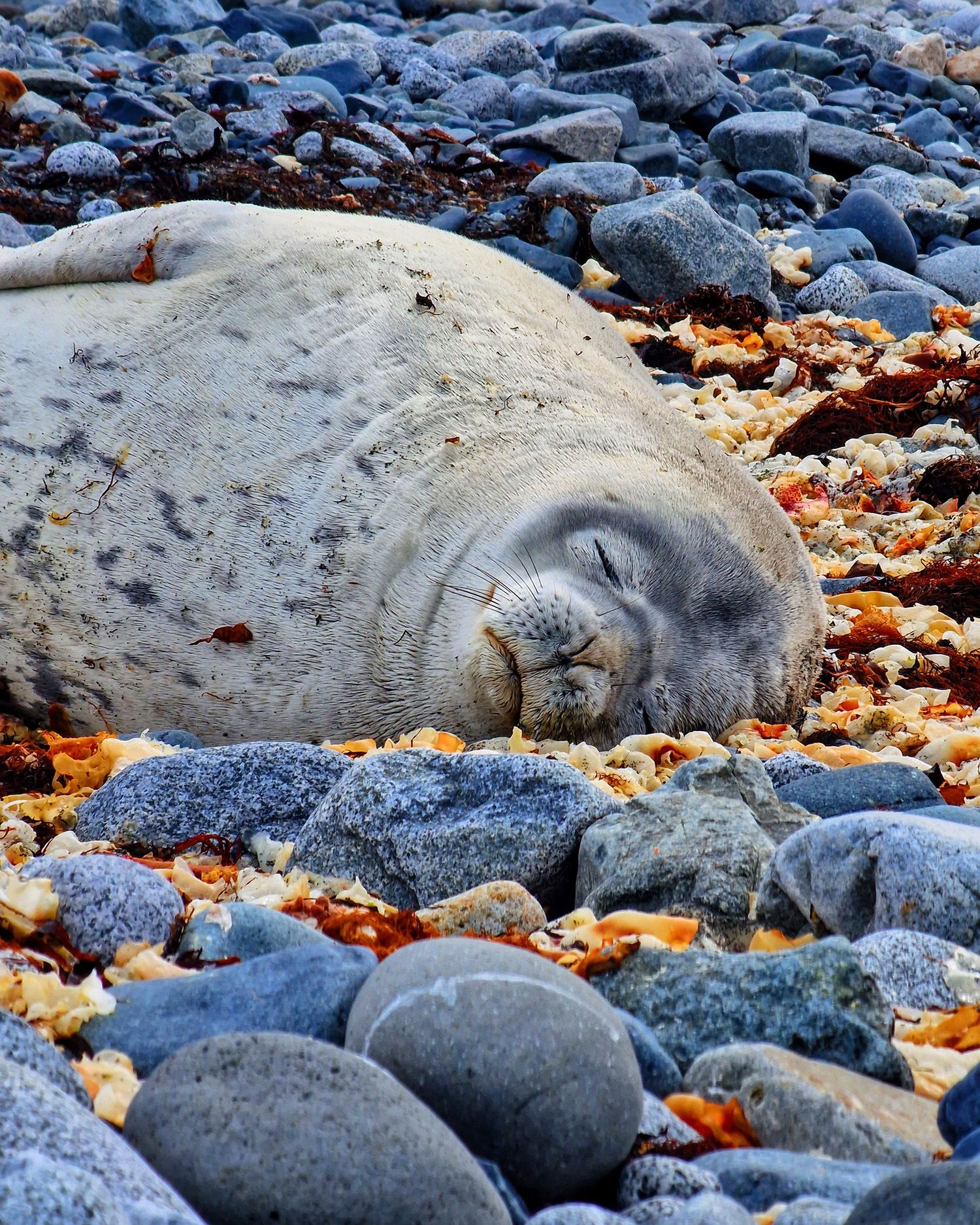
Weddell seals can dive underwater for up to 80 minutes at a time, which is perhaps why this one is so sleepy
Weddell seals can dive underwater for up to 80 minutes at a time, which is perhaps why this one is so sleepy
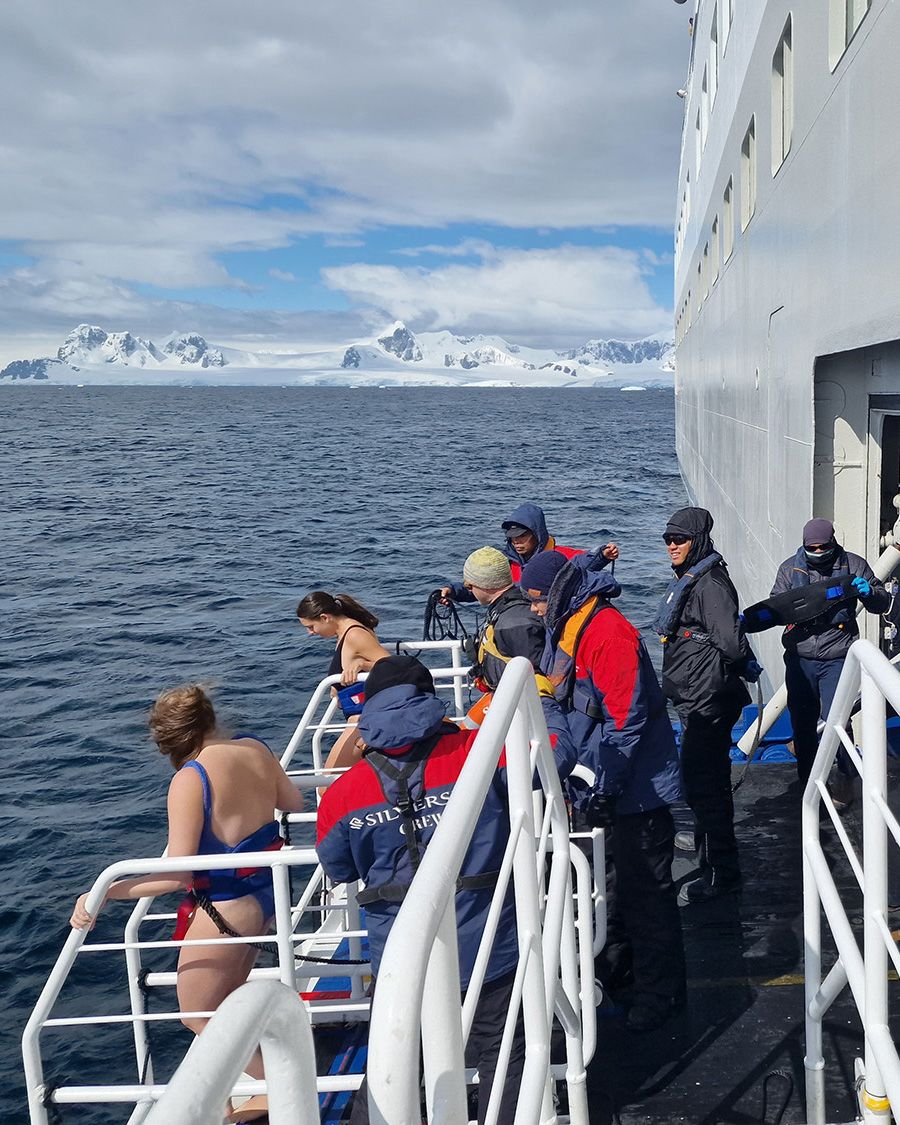
A polar plunge at 66 degrees south
A polar plunge at 66 degrees south
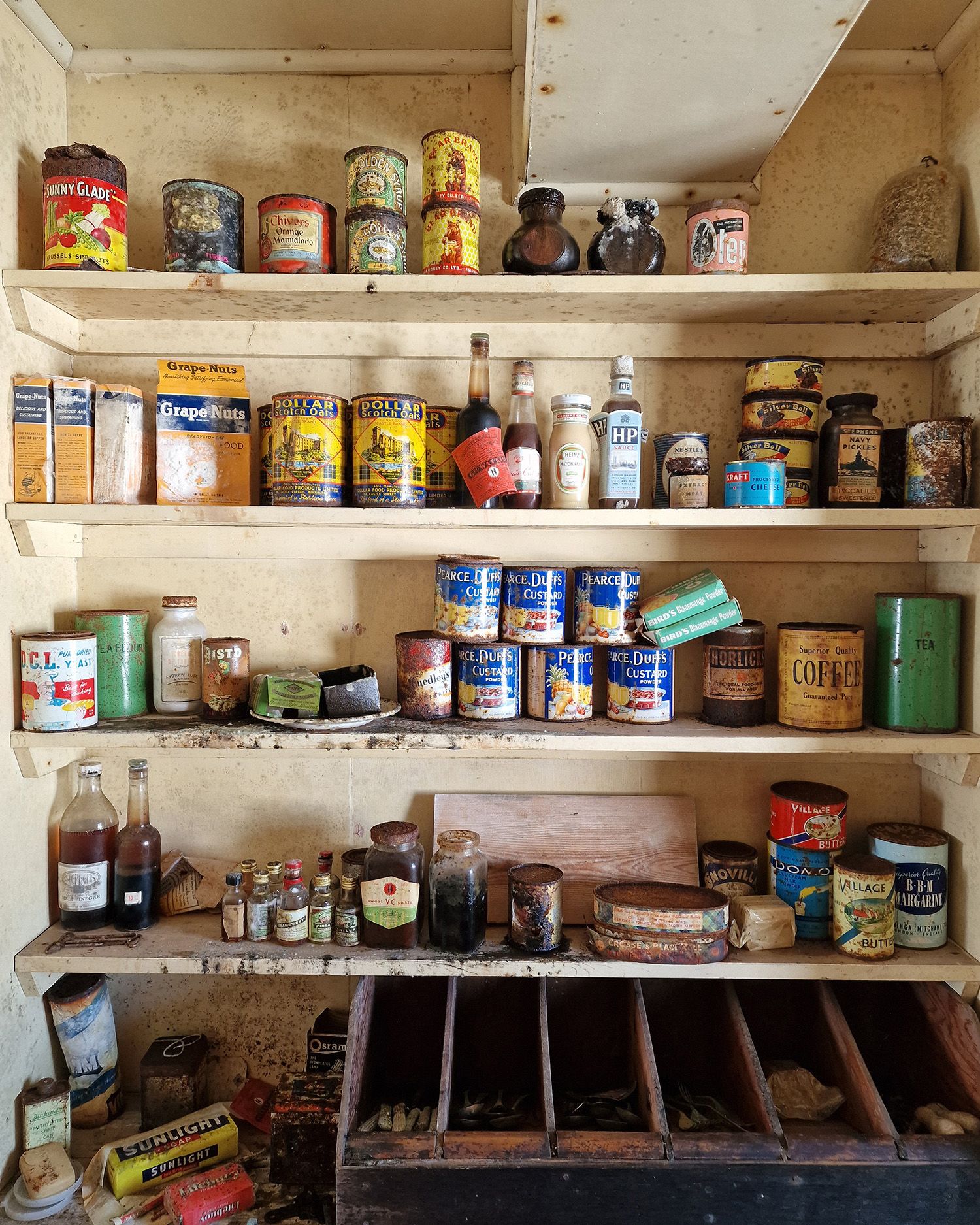
Cans of old food scatter the interior of Damoy Hut like a domestic time capsule
Cans of old food scatter the interior of Damoy Hut like a domestic time capsule
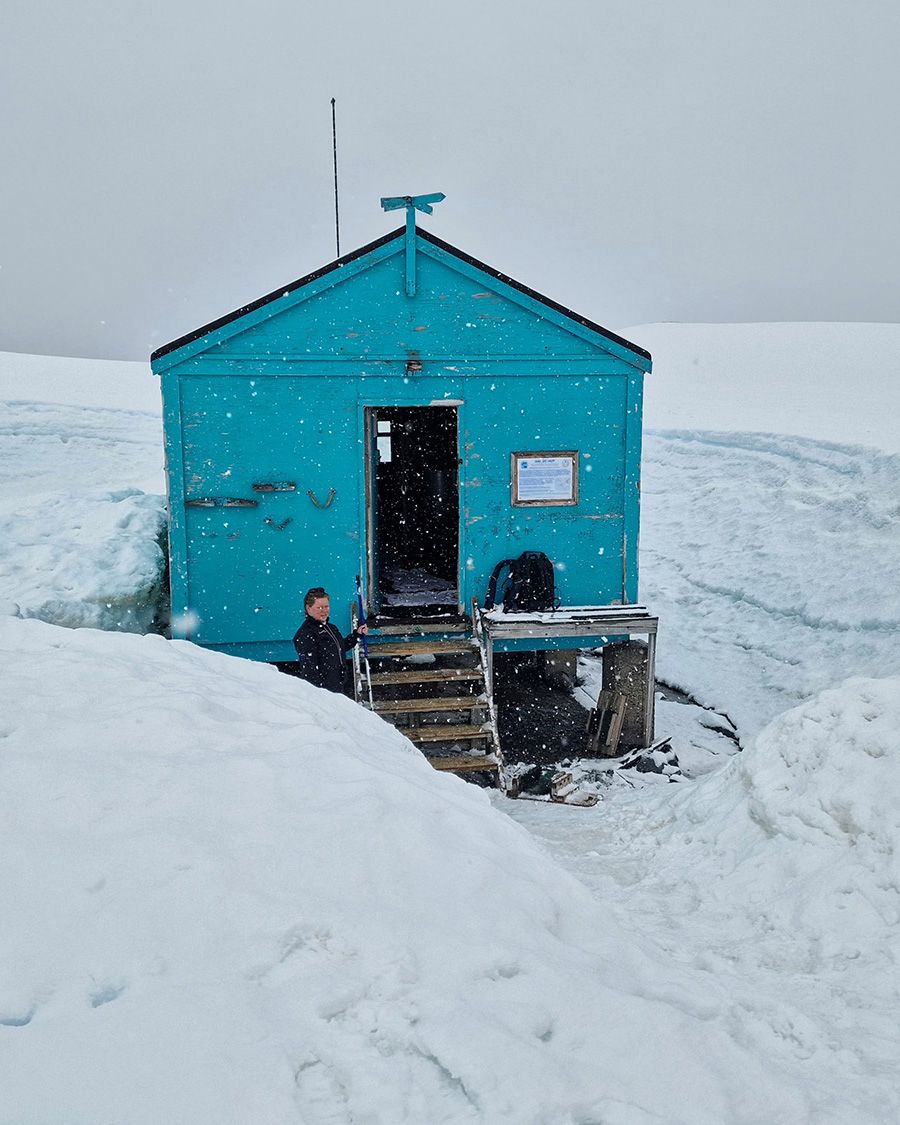
Mila examines Damoy Hut
Mila examines Damoy Hut
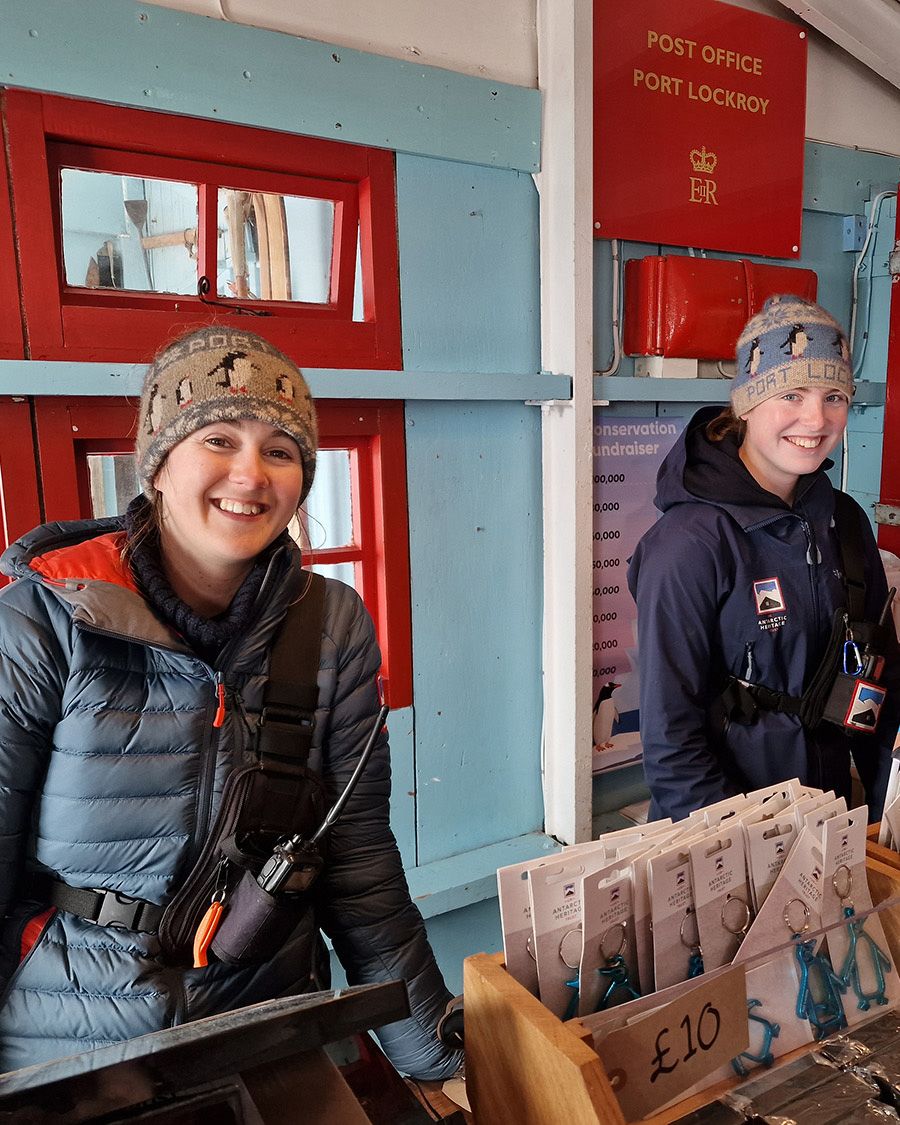
The team at the UK Antarctic Heritage Trust shop and post office at Port Lockroy
The team at the UK Antarctic Heritage Trust shop and post office at Port Lockroy
Iceberg adventures
As we turned around and started to head back north, we arrived at a location known as Iceberg Alley, or Iceberg Graveyard – a site so breathtaking that I had a hard time believing it was one of many similar locations found across the continent. We glided past a kaleidoscope of different types of iceberg, the most frequent being the glacier ’berg (most would fall into this category of irregular shapes). Yet we were also lucky enough to see some excellent examples of tabular bergs, crowned with a flat top, as well as a few domed varieties, which were smooth and rounded.
The scale, the volume, the colours – everything about Iceberg Alley conjured superlatives. This was one of the most stimulating boat rides I’d experienced, and worth every second of the bone-rattling ‘Drake Shake’ I’d endured to reach the peninsula.
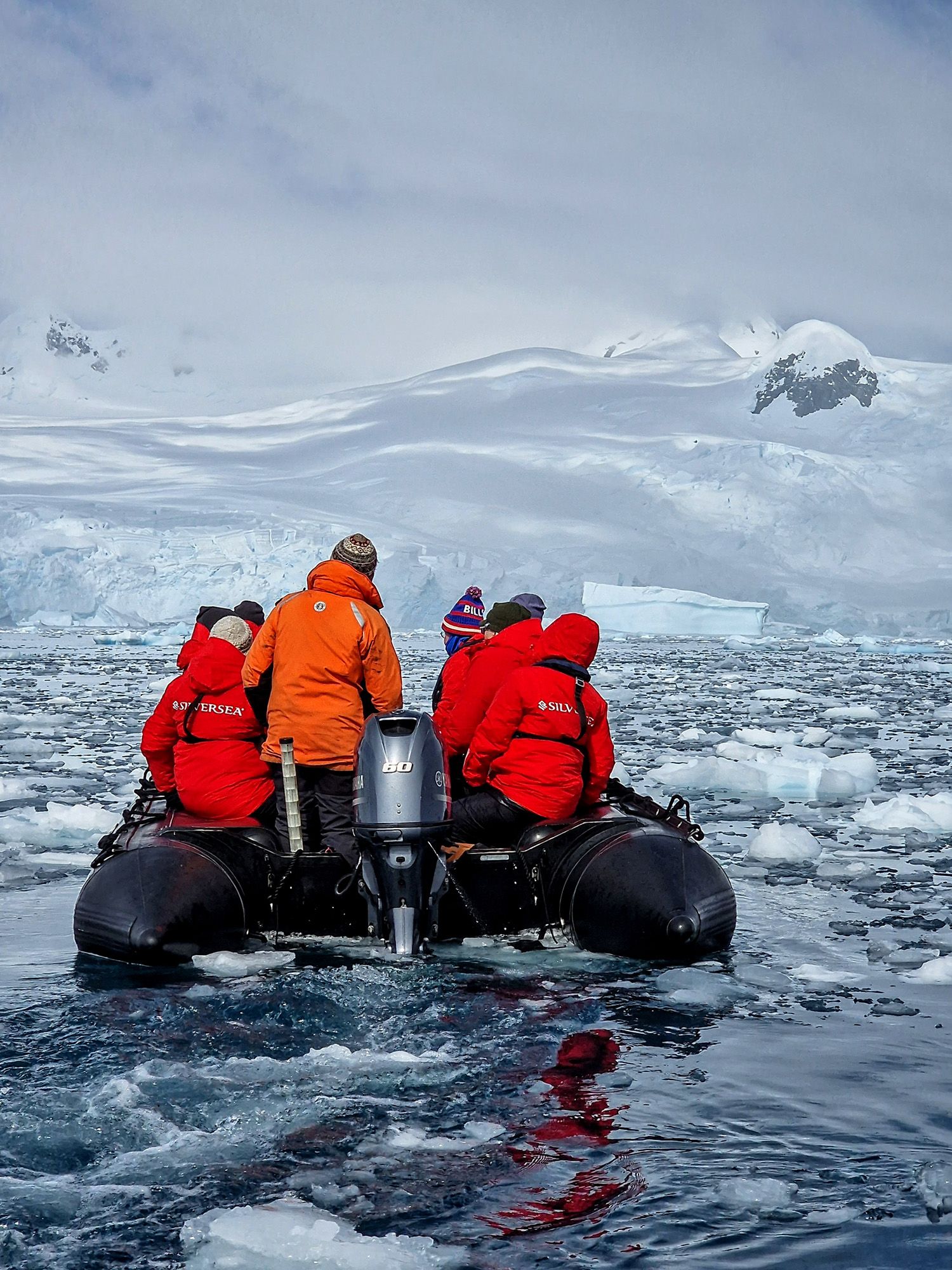
Taking a Zodiac through the floe of Iceberg Alley can be a treacherous task, as you never know when these giant ’bergs will calve into the ocean
Taking a Zodiac through the floe of Iceberg Alley can be a treacherous task, as you never know when these giant ’bergs will calve into the ocean
It was even better for those who took a kayak trip instead of the standard Zodiac ride. The immediacy of the connection with the icebergs was thrilling, although more dangerous. Lots of attention was required, as these ’bergs could capsize at any second and without warning.
That same evening we were treated to a good dozen humpback and minke whale sightings as the ship continued cruising towards Neko Bay. I was among ten or so passengers braving ice-cold gasps of air and trying to spot spouts and tails in the water from the observation deck.
Neko Harbour was the last possible landing on the actual continental shelf of Antarctica – all of our previous excursions had been on islands lying off the continental landmass. However, strong winds had added another location to the – by now rather long – list of cancelled landings.
“We are not particularly lucky with the weather this time,” confirmed Schalk while announcing the latest cancellation
Our arrival at Cuverville Island the next day was marked yet again by heavy snowfall but, helpfully, no winds.

Kayakers paddle past the chinstraps of Cuverville Island, which sits at the entrance to the Errera Channel
Kayakers paddle past the chinstraps of Cuverville Island, which sits at the entrance to the Errera Channel
“This is unusual, and so unseasonal,” explained Damon, looking worried and explaining that these kind of conditions didn’t typically start until March; we were only in January. “Climate change is really affecting the polar regions, and nowhere is this more visible than in Antarctica.”
The accelerated retreat of the Antarctic ice sheet has been – rightly so – high on the news agenda recently. But it’s not often that you get to study the real-time effects this closely.
“The ecosystem here is so fragile that even the slightest change in weather patterns can have significant results on the local wildlife,” explained Damon, pointing to the penguin nests, in which many eggs had been destroyed by a combination of the weather and predators. “This will be a bad year for penguin chicks. The ones that have not hatched are unlikely to do so,” he explained, which made the sight of the penguins still looking after eggs a difficult one.
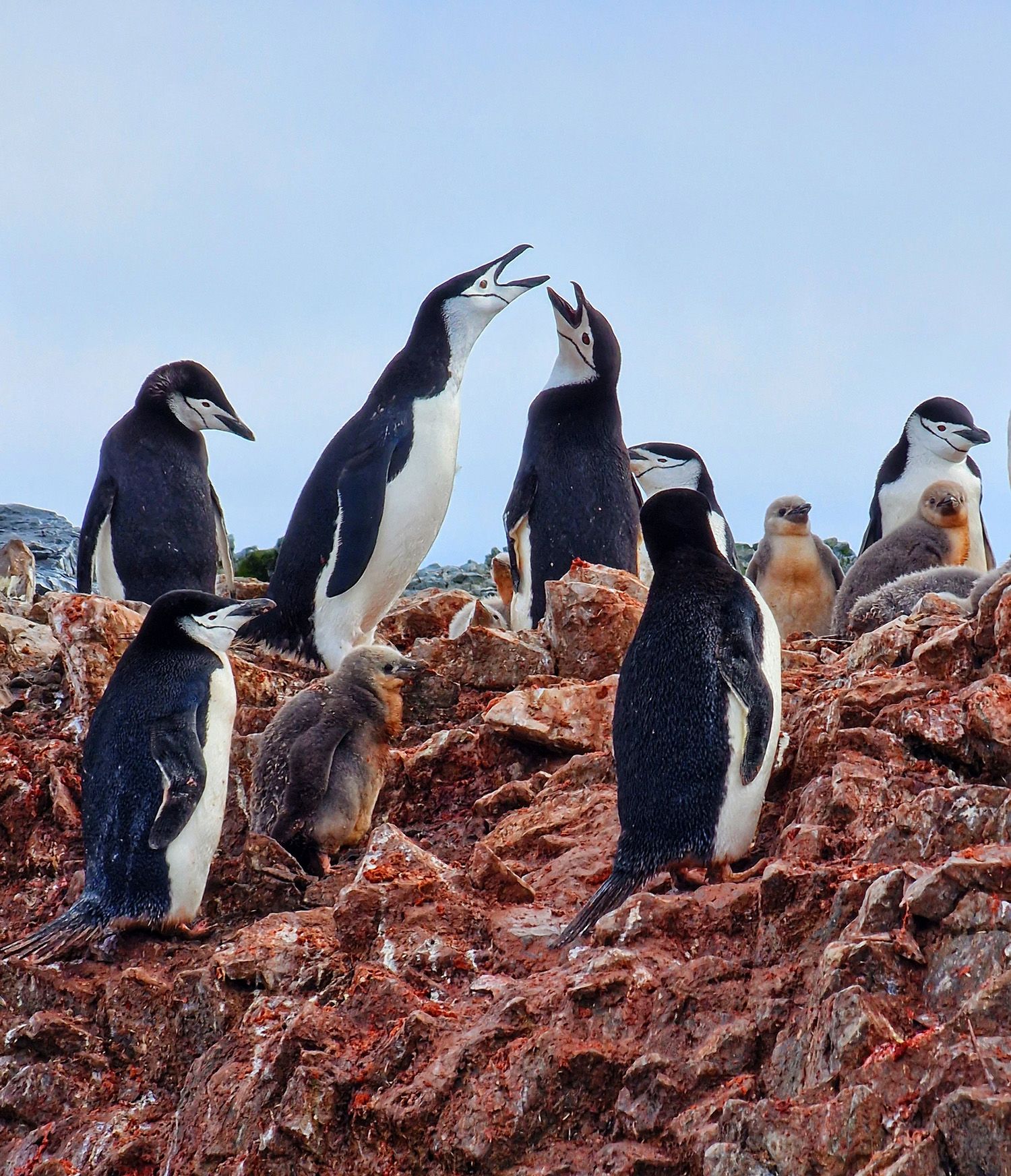
Some chinstrap penguins and their newborn chicks scramble across the rocks
Some chinstrap penguins and their newborn chicks scramble across the rocks
As if in response to the heavier snowfall, we witnessed penguin couples squabble and croon at one another. There was plenty of bowing and examples of movements that seemingly helped reinforce their bond.
“Some of these are mating courtship rituals,” explained Damon. I asked whether it was true that penguins were monogamous. “Mating for life is a bit of a myth; they will generally come back from the breeding cycle and, if needed, choose a new partner,” Damon clarified. Watching these birds speed-dating on the ice, it was reassuring that even the unseasonal weather could do little to cool their enthusiasm.
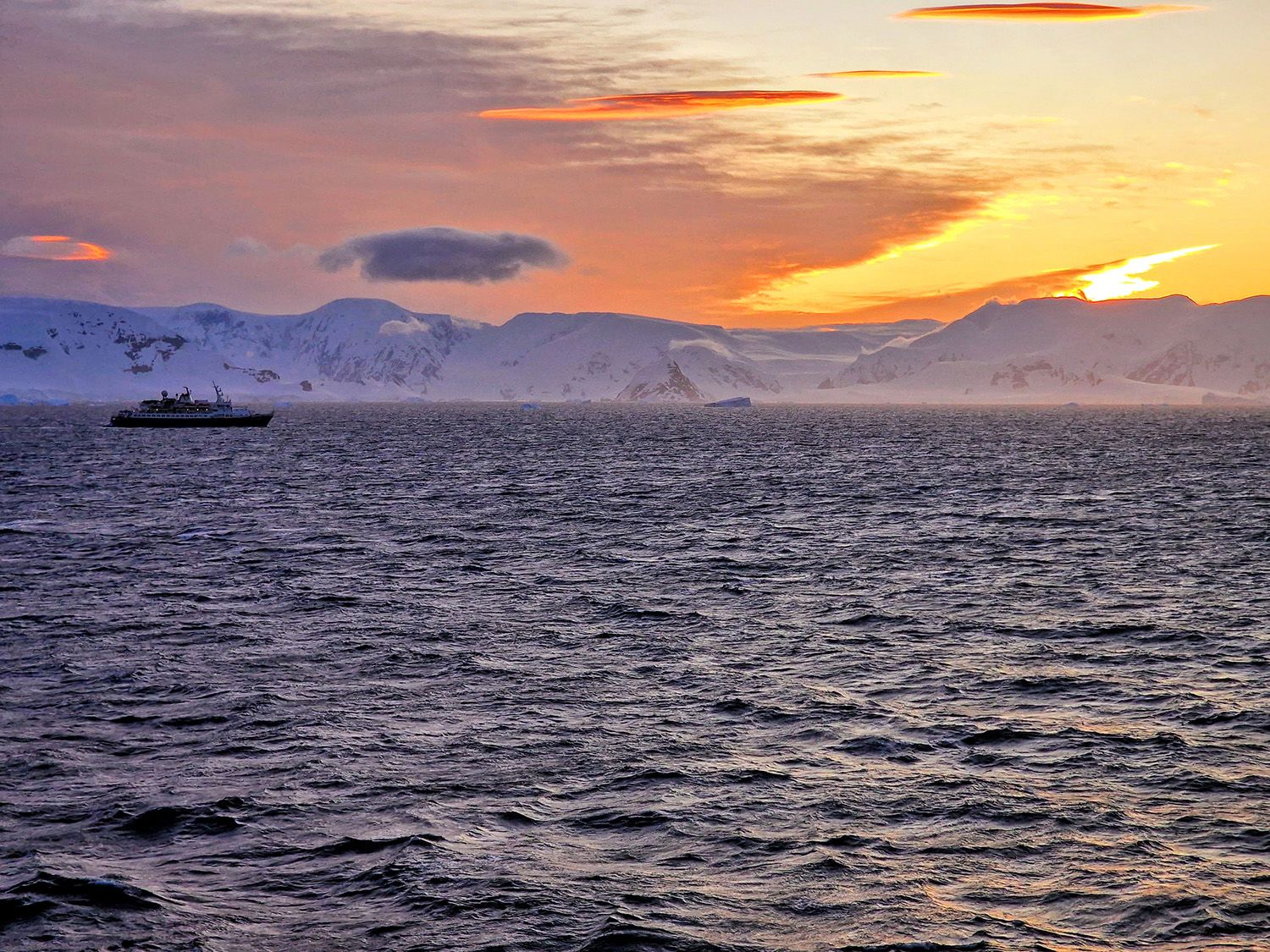
Popular isolation
As we continued our voyage towards the South Shetlands, and eventually the Drake Passage once more, we had an altogether different type of encounter: a humongous cruise-liner with what looked like 300 decks and 3,000 passengers was racing ahead of us. It was the first time during my voyage that I had seen any vessel other than the Silver Cloud.
“There are approximately 40 ships in the vicinity of our area,” explained Captain Andriy Domanin in the Silver Cloud’s Italian restaurant that evening. “It is a carefully choreographed dance that we need to perform. It takes a lot of planning to avoid them meeting each other.”
When Captain Domanin started coming to Antarctica in 1993, there were about four ships making the journey each season; “Now there are over 50,” he told me. “Yet it’s almost as if we all pretend that we’re the only ones in Antarctica,” smiled the captain.
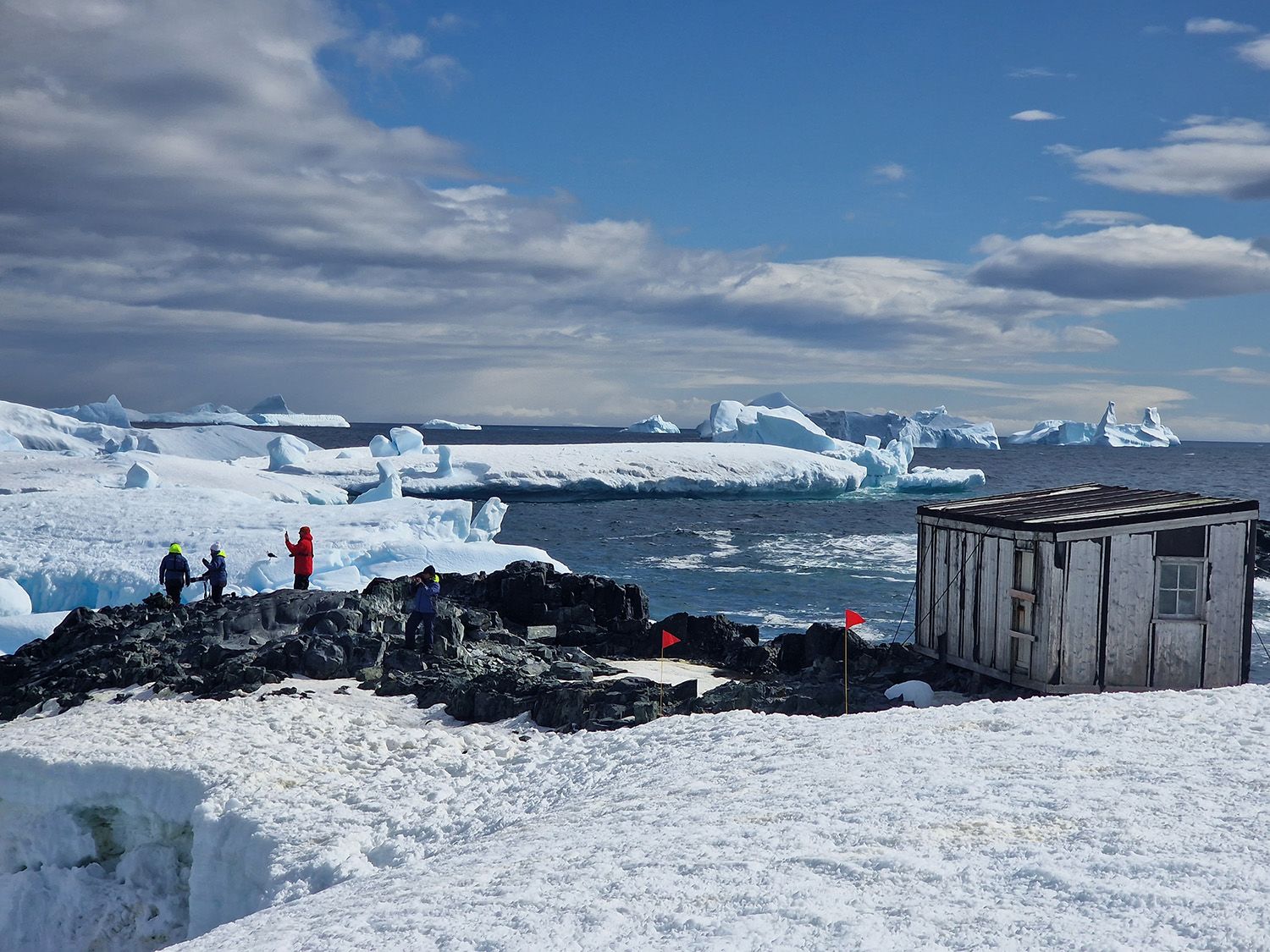
Visitor numbers to Antarctica are ever growing, but a conversation around sustainability is being had
Visitor numbers to Antarctica are ever growing, but a conversation around sustainability is being had
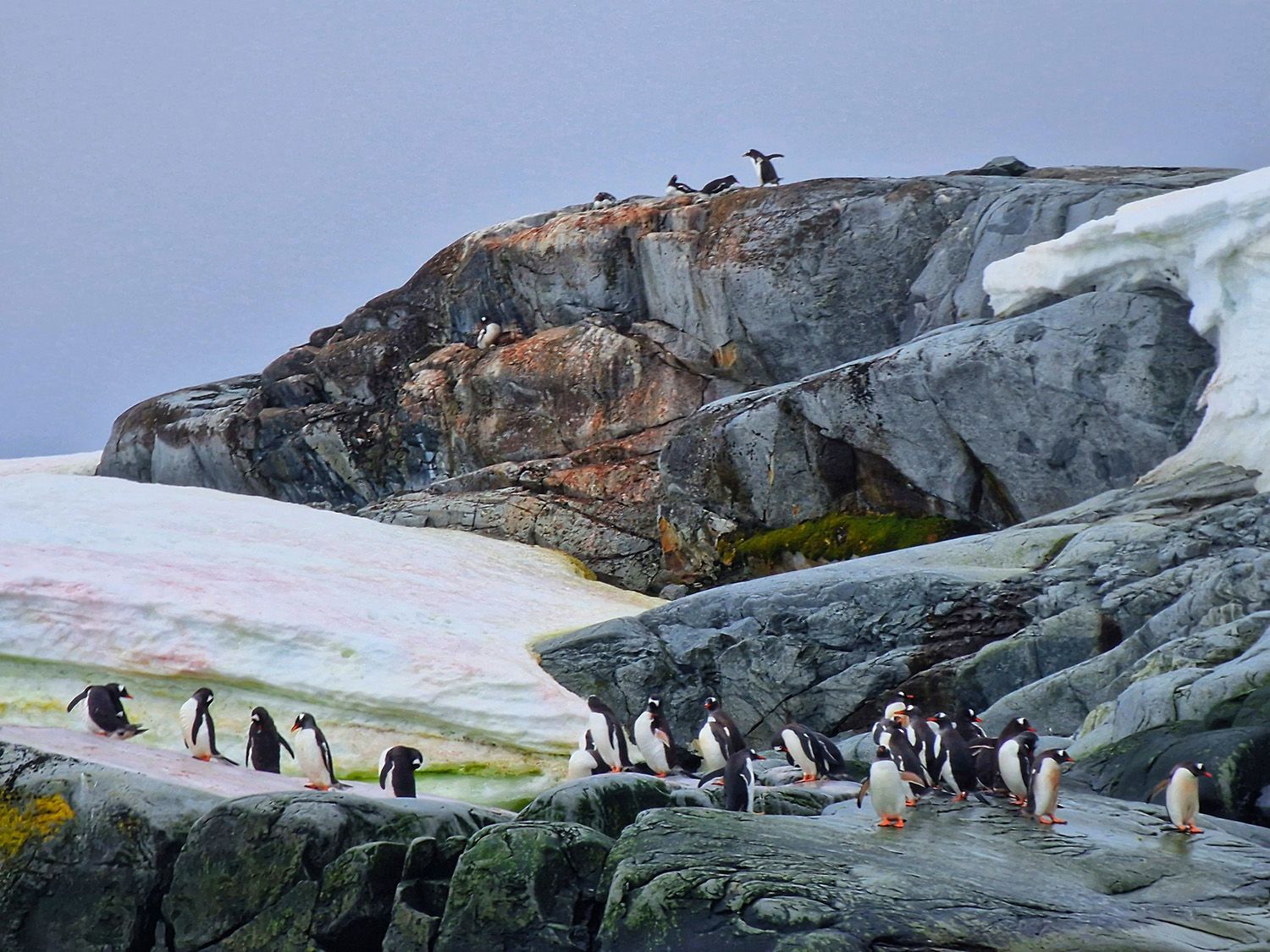
Petermann Island, named after a German geographer in the late 1800s, is home to one of the southernmost colonies of gentoo penguins in the world
Petermann Island, named after a German geographer in the late 1800s, is home to one of the southernmost colonies of gentoo penguins in the world
We were certainly not alone. During the 2022/2023 summer season when I visited, the IAATO estimates that the number of visitors topped 100,000. There is a very pertinent discussion to be had about the impact of growing visitor numbers on the White Continent – how many ships and how many passengers can it support without significant damage to its fragile ecosystem? The IAATO regulations were not thought out with big tourism numbers in mind. And while its basic framework is applicable to visitors, the time is up for finding a new, stricter and more considerate approach vis-à-vis the growing demand.
"The IAATO estimates that the number of visitors to Antarctica topped 100,000 last season"
As we approached the southern entrance of the Beagle Channel in Chile, a majestic wandering albatross made a stunning, and quite rare, appearance. At around 3.5m from one wingtip to the other, it boasts the biggest wingspan of any bird in the world, and like us, it was headed to warmer climes, gliding almost effortlessly. It too was no doubt grateful for also getting the ‘Drake Lake’ treatment – as the passage is called when the wind and conditions are mild.
This albatross will return to Antarctica time and again, despite the harsh weather. I would like to come back too, but only on a small cruise ship. The raw majesty and superlatives of this continent are too precious to share, and the thought of overtourism here is an alarming one. I envied the early explorers and their unobstructed views – if not their rations – and thought about how the local wildlife had adapted to the toughest conditions on Earth. It would be a tragedy if the one thing that this land couldn’t survive was people
About the trip
The author travelled with Silversea on a 12-day cruise from Puerto Williams to the Antarctic Peninsula and back aboard the Silver Cloud. The trip includes all flights, transfers, meals and excursions.



